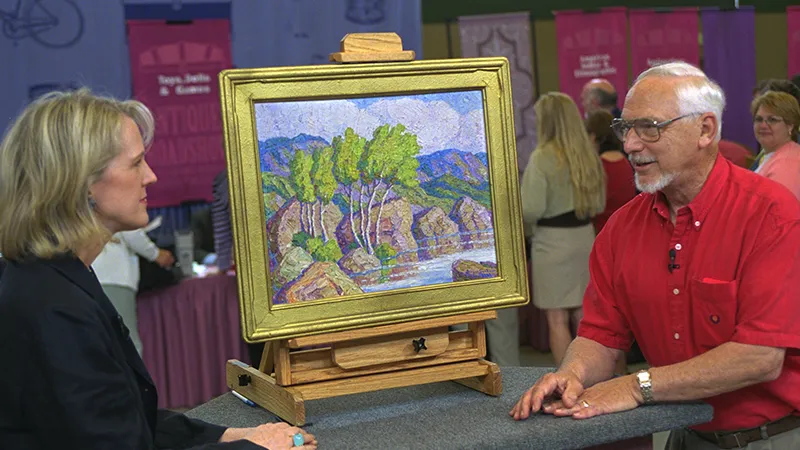GUEST: It was given to one of my great-great-grandparents around the turn of the century, when they lived in the town of Port Townsend.
APPRAISER: Yes?
GUEST: And they both worked with the Native Americans in that area. And as a gift, it was given to them. I know that it is a rattle.
APPRAISER: Correct.
GUEST: And I don't know much more about it than that except I think it was ceremonial in nature. According to my mother, it was part of the Tlingit tribe.
APPRAISER: She's close. Very close. It's from a long ways north from Port Townsend. It's from, probably from Prince Rupert in British Columbia.
GUEST: Really?
APPRAISER: It's from a tribe called the Tsimshian, and they're right at the border of Alaska and the northern part of British Columbia there.
GUEST: Wow.
APPRAISER: And you're right in assuming that it was ceremonial. The Northwest coast peoples up there made essentially two different kinds of rattles. Shamans had mostly a round rattle that they used in curing people.
GUEST: Uh-huh.
APPRAISER: And chiefs had rattles like this.
GUEST: You're kidding.
APPRAISER: It's a chief's rattle.
GUEST: Oh my gosh.
APPRAISER: And it's called a raven rattle.
GUEST: Ooh.
APPRAISER: And we can see here if we look on the side, this is the raven. And we have a human figure sitting on the back of the raven. The raven is the creator of man. And we have this frog going from the raven through the frog into the human figure. It's the movement of animal into man and back again. Okay. Also we have on the bottom, beautifully carved, this little wrapping here. It's not original.
GUEST: No, no, it...
APPRAISER: That's been added a little later.
GUEST: Yes.
APPRAISER: Every photograph we see in the 19th century, we see these are being used by chiefs, held upside down. And the belief is it's to stop the bird, the raven from flying away.
GUEST: Oh.
APPRAISER: Unfortunately now, we're not getting the sound of the rattling because when this separated, the pebbles-- there used to be sometimes lead shot, more often just little round pebbles-- were in between these two carved halves. So that when it was... moved, you'd get that lovely sound. And it was quite a lovely sound. This is probably about 1880. Earlier rattles our gallery sold for quite a bit of money, in the excess of $50,000. Yours, very nice, not the absolute best. But we would expect in the neighborhood of $15,000, $18,000, perhaps $20,000.
GUEST: (chuckling) Oh my God.
APPRAISER: Still a little more than you expected, I think.
GUEST: A lot more than I expected.
APPRAISER: With the exception of this little wrapping here, condition's excellent, very beautifully carved, and a wonderful thing.








